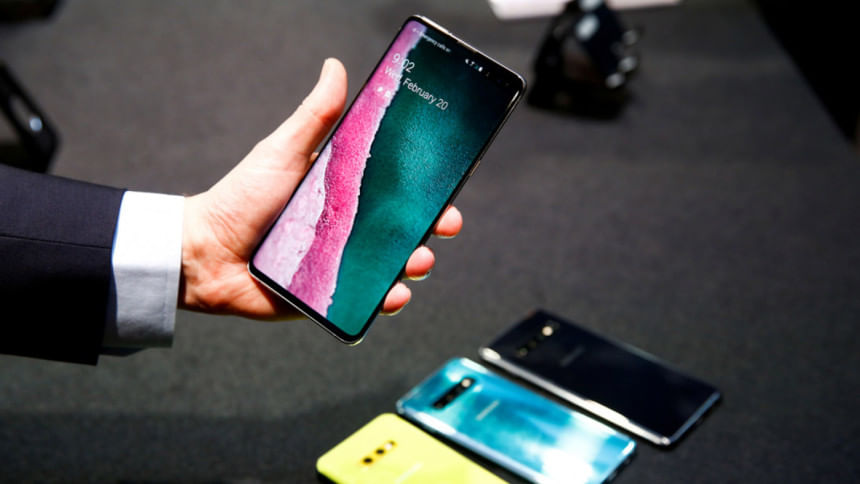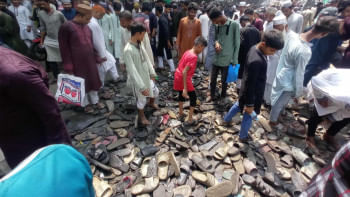Self-sustenance in smartphone production

According to data provided by the Bangladesh Telecommunication Regulatory Commission (BTRC), the number of internet users in Bangladesh stood at 11.61 crore in March 2021, up by 12.48 percent year-on-year, whereas the number of mobile phone users stood at 17.46 crore in March 2021, up by 5.62 percent year-on-year. According to industry insiders, the e-commerce industry in Bangladesh has been growing steadily at a rate of 25.6 percent in the last few years, and this industry is expected to generate more than USD 5 billion in Gross Merchandise Value (GMV) by 2025 when at least 25 percent of the total population will be e-commerce customers. Since the pandemic hit Bangladesh, Mobile Financial Services (MFS) have experienced tremendous growth as around 1.8 crore customers in 11 months (March 2020 to January 2021) resorted to such digital services last year, taking the total number of registered MFS users standing at 10.06 crore.
Once you pore over these statistics, it becomes clear to anyone that Bangladesh is taking great strides in materialising the Digital Bangladesh dream. While the pandemic has brought the whole world down to its knees, even the strong economies are struggling heavily to experience a quick rebound. In such a backdrop, Bangladesh's economy has been so resilient and is performing strongly owing largely to the fact that the country has left no stone unturned to turn the tables by capitalising on the components of digital transformation.
To cope with the heavy blow dealt by the coronavirus, Bangladesh has, in an adroit move, swiftly shifted its attention to digitisation and has gone all-out to expedite the process. Consequently, we have seen a meteoric rise in the number of mobile internet and MFS users. This transformation was heavily aided by wide connectivity. While Bangladesh now enjoys 4G connectivity all over the country, the rollout process of more advanced 5G technology does not seem too far off into the future, with preparations going on in full swing and the stakeholders, including smart device manufacturers gearing up and scaling up their productions. If Bangladesh wants to continue the existing growth—counting on the power of connectivity and technology—digital inclusivity is a must. At a time when there is every possibility of the digital divide increasing, it is imperative that the access of cross-sections of people to smartphones—devices necessary to access ever-evolving technology—be ensured.
Bangladesh, as always, is playing a commendable role in this regard as policies conducive to the local production of smartphones and other smart devices are already in place. There are many smartphone brands selling smart devices in this country, but it is often seen that people from all walks of life struggle to buy the right phone because of the relatively high prices. This is why it is important that mobile brands manufacture their devices locally so that they can offer smartphones at more competitive prices. It is, however, heartening to see that many smartphone manufacturers have opted for local production, thanks to the time-befitting initiatives of the government.
When smartphones are manufactured locally, it will open up many windows for both the manufacturers and the users. Firstly, the brands will witness a dramatic reduction of costs as they will not have to pay taxes related to import. The government has adopted a revised tax policy with a view to encouraging manufacturers to produce smartphones locally. The cumulative tax on imported handsets is 34 percent. In contrast, local assemblers, who follow a Semi-Knock Down (SKD) Process, will have to pay 17 percent cumulative tax, whereas cumulative tax for phones which are locally manufactured is only 1 percent. It is nothing short of incredible. This tax structure is industry-friendly and points to the government's willingness to ensure digital inclusivity for all.
Such advantages will benefit the people of the country in mainly two ways. First and foremost, they will be able to buy smartphones at affordable prices, insinuating that bringing down the digital divide in the face of increasing digital transformation will turn out to be a much more feasible task. Just imagine the situation when even someone from the rural backwater will have access to connectivity and digital services with a 5G connected smartphone in his/her hands. Such transformation will even boost the rural economy. Second, setting up factories in Bangladesh will create more job opportunities for the skilled workforce who are sitting idle. Because of the pandemic, the whole world is suffering, so is the job sector in Bangladesh. Its unemployment rate increased by 1.1 percent to 5.3 percent in 2020, according to a new assessment by the International Labour Organization (ILO). This problematic situation can be mitigated, at least to certain degrees, if smartphone brands move on to setting up factories in this country. This way, the country will be able to utilise its demographic dividend in the proper manner.
The equation is very simple—the more brands lean towards local factories, the more affordable smartphones will be. The more people have access to smart devices, the more they will be able to tap into the endless possibilities of digitisation and the subsequent transformation. When this transformation will reach every corner of the country, then the vision of Digital Bangladesh and comprehensive digital transformation across all sectors will get realised in the truest sense. Most importantly, in all these scenarios, it is only the people of this country who are going to benefit the most.
Tim Shao is the Managing Director of realme Bangladesh.

 For all latest news, follow The Daily Star's Google News channel.
For all latest news, follow The Daily Star's Google News channel. 



Comments